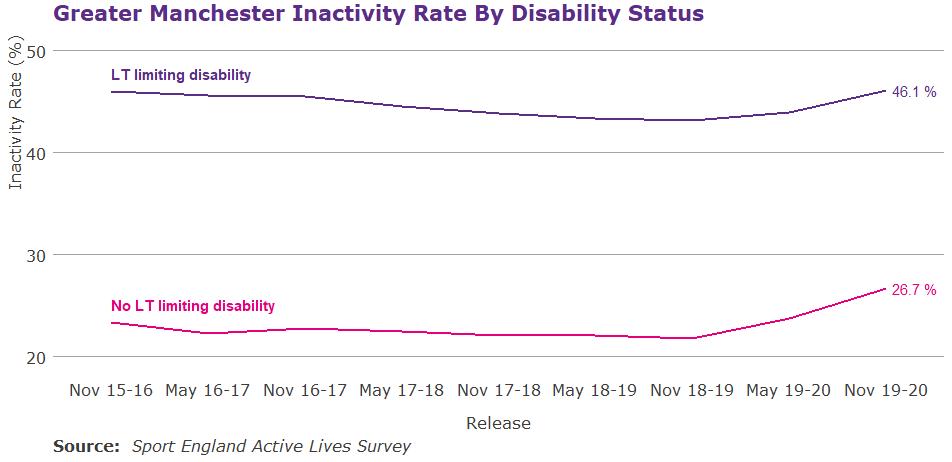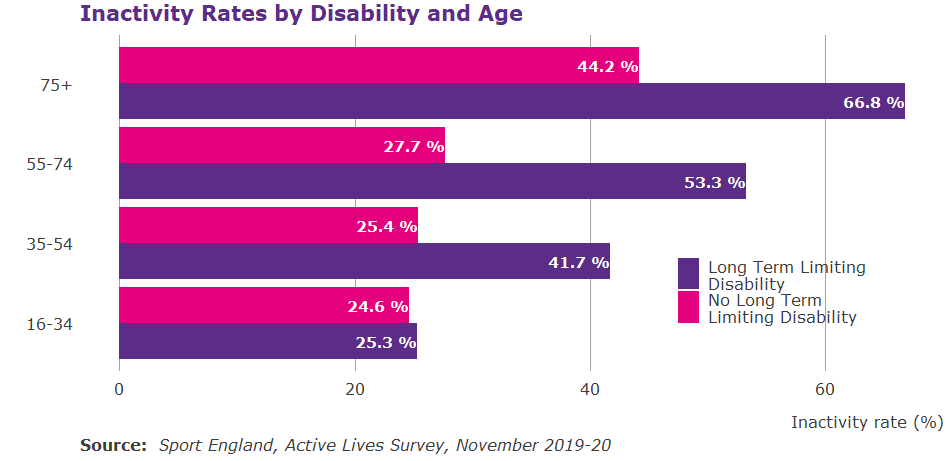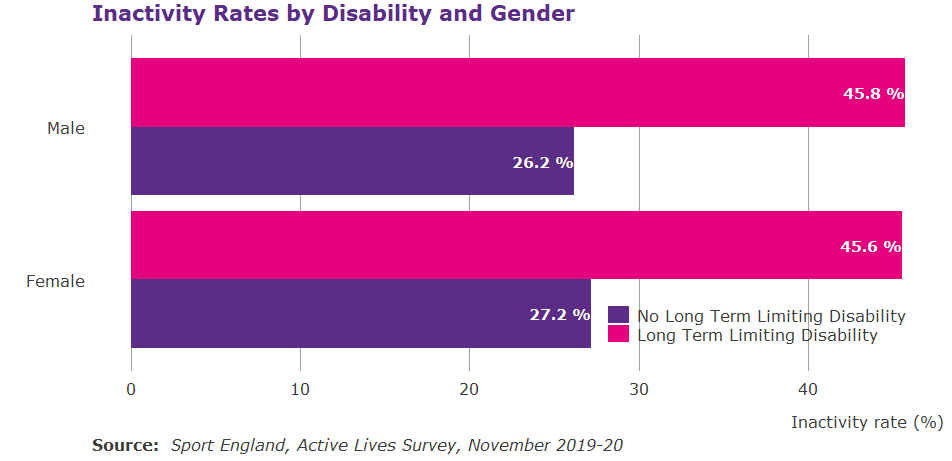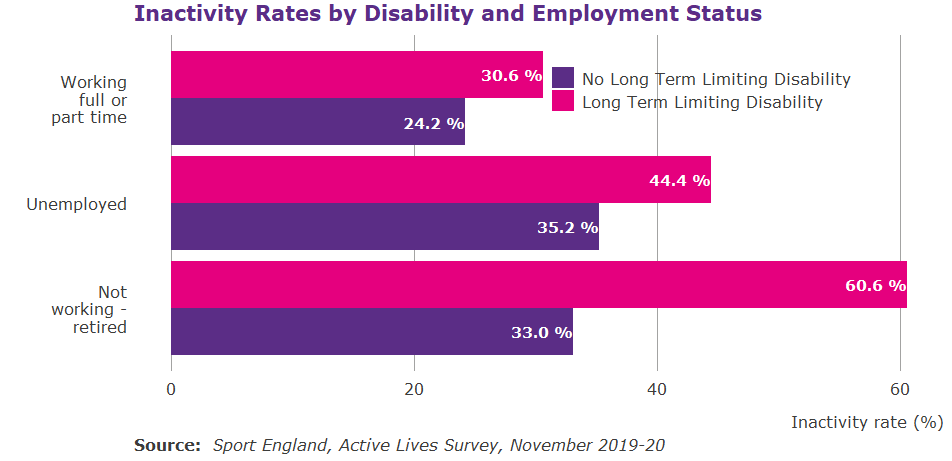Greater Manchester Activity Levels Nov 19-20: Disability
A detailed breakdown of the latest Active Lives research exploring the differences in activity levels by disability and long term health conditions across Greater Manchester.
In Greater Manchester the inactivity disability gap is 19.4% and has narrowed since baseline (November 2015/16) by 3.3%. The cause of this is not simply decreasing inactivity, it has been driven by an increase in inactivity amongst those with no long term limiting disabilities (+3.4%) and no change in inactivity rates amongst those with long term limiting disabilities (0.0%).

Borough Comparison
Greater Manchester has a smaller disability inactivity gap than England and eight of the ten boroughs also have a smaller disability inactivity gap than England (19.6%), Wigan and Salford are the two exceptions with disability inactivity gaps of 28.8% and 12.5% respectively. Since November 2015/16 nine of the ten boroughs have narrowed the inactivity gap, Wigan is the only area to have seen the gap grow (+5.4%), Trafford and Tameside have both closed the gap by over 10%, 10.1% and 10.8% respectively.

Disability and other factors
We know that numerous factors intersect and compound the differences we see in activity levels amongst different cohorts. As such it is important to not look at demographics in isolation.
Age
Overall the inactivity age gap in Greater Manchester is 27.8%, however, amongst those with a disability it is 41.5%. Whilst inactivity is relatively similar amongst young adults (16 to 34 year olds), inactivity levels start to diverge significantly in middle age, with the gap growing by 15.6% from 16 to 34 year olds to 35 to 54 year olds.

Gender
Whilst the gender gap overall for Greater Manchester is 2.3% there is less variance in relation to disability status; the gender gap amongst those with a long term limiting disability is 0.2%. Whilst the female disability gap is 18.4% the male disability gap is 19.6%, this is just a 1.2% difference.

Disability and education level
A persons level of education and corresponding qualifications also has a relationship with their activity levels. For those with no long term limiting disabilities inactivity declines as the level of education increases. However, for those with a long term limiting disability there is no difference in inactivity rates at the higher level of qualifications; inactivity rates are the same for those with level three qualifications (A-level) and level four or above qualifications (certificate of higher education), at 31.2%. At all qualification levels, people with a long term limiting disability are more inactive than those without a long term limiting disability.

N.B. There was insufficient data to explore Level 1 and equivalents and Other qualifications.
Employment Status
Although there is only a small difference (2.2%) in inactivity amongst those with no disability who are unemployed, 35.3%, or retired, 33.0%, the variance is much greater amongst those with a disability; the gap here is 16.2%. However, we know that the disability gap grows with age and this is likely reflected in the large difference amongst those who are retired.

Activity Alliance offer further information on the experiences of people with disabilities and long term health conditions and how to engage them in physical activity.
More information on the latest Active Lives release can be found here. Find out more about the relationship between disability, long term health conditions and physical activity here.
If you have questions about this data please email: [email protected]
All data is rounded to one decimal point.
Published June 2021
